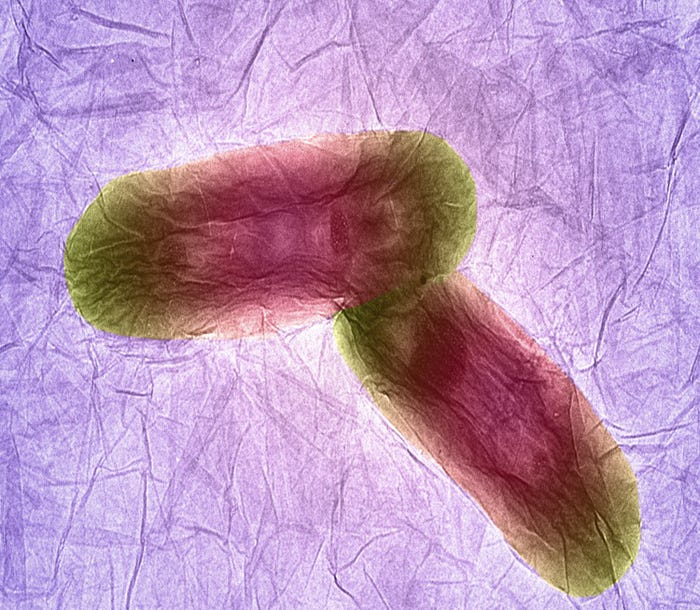How Antimicrobial Nanotubes in Packaging Can Revolutionize Food Safety
Nanoencapsulation of natural or synthetic antimicrobial agents into food packaging can help ensure the product is safe for consumption. The technology also helps extend shelf life and reduce food waste cost effectively and safely for humans and the environment.

Food waste around the world is a tremendous waste of resources, not only in terms of lost product but also in sunk costs. It is a problem that can happen at any stage in logistics, and there is a strong demand for innovative solutions to significantly reduce or eliminate food waste. However, with the growing demand for organic products with fewer preservatives, producers and packagers worldwide are scrambling to adjust to the new wave of consumer sentiment.
The acceleration of nanotechnology has brought fresh, innovative ideas and processes to a multitude of industries. The next innovation in the food packaging industry could be using nanotechnology to incorporate antimicrobial agents to satiate the demand for less processed and organic foods while still providing a more stable shelf-life.
A new age of active packaging.
While some active packaging elements are already in use, such as oxygen absorbers, they are limited in controlling many types of bacteria and mold. I believe that the incorporation of antimicrobial nanocarriers in packaging can optimize the shelf-life of food.
But, will the cost of implementation of antimicrobial nanocarriers outweigh the benefits of reduced waste and increased shelf-life? To answer this and other questions, it is important we first look at the many possible applications for antimicrobial agents in packaging.
Numerous antimicrobial agents, both natural and synthetic, can be incorporated into nanocarriers. Natural options include antimicrobial organic acids, essential oils, and enzymes. Some biopolymers, such as chitosan (crustacean shells made into a bioactive polymer), also do exceptionally well. Some research also suggests that long-chain polysaccharides are highly cost-effective and safe for both humans and the environment.
Even though some synthetic options (such as synthetic peptides) reduce the potential for harmful side effects, to keep with consumer demand, natural antimicrobial agents are the preferred option.
Whether a manufacturer chooses natural or synthetic antimicrobial agents, the most critical aspect is to avoid the problems associated with incorporating the antimicrobial agent in a free form within the packaging. Using the antimicrobial agents in a free form will require much larger quantities of the agents (adding to the cost) and could also interfere with the food’s qualities.
That is where nanoencapsulation steps in. By putting the antimicrobial agents into the nanocarriers, the agents’ features are enhanced with more favorable properties, such as high solubility, bioavailability, and absorption. Perhaps the most important features are the agents’ controlled-release and the ability to protect them from external environmental stresses, thus preserving their potency.
Essential oils as antimicrobial agents combat bacteria.
Essential oils are one of the most effective antimicrobial agents produced by countless plants and living organisms. Humans have used them for thousands of years for both their medicinal and aesthetic qualities. In recent years, their popularity has grown in the Western world, and they are often used as a popular marketing tool.
When incorporated into nanocarriers, the essential oils can target and destroy bacteria both externally and internally. As one component of the oil weakens the microbe’s protective outer membranes, another component can disrupt the internal mechanisms, thereby effectively killing it. Some of the most effective essential oils include:
• Coriander
• Oregano
• Clove
• Thyme
• Cinnamon
• Rosemary
Different types of essential oils can be combined to maximize their antimicrobial strength. For instance, combining oregano and rosemary has been shown to be effective against E. coli, listeria, salmonella, and Staphylococcus aureus on raw vegetables. However, foods that are high in fat can often reduce the antimicrobial efficacy of essential oils, thereby solidifying the need for nanoencapsulation to prevent undesirable interactions.

Antimicrobial peptides offer broad-spectrum protection.
Both organic and synthetic peptides have been shown to offer much broader protection against bacteria, fungus, and viruses. For instance, short synthetic peptides such as arginine and tryptophan have been proven effective in fighting drug-resistant Staphylococcus aureus. Natural peptides work similarly to essential oils in that they attack microbes using both external and internal mechanisms.
Since many harmful microbes are susceptible to pH levels (on the acidic or alkaline scale) in their environment, peptides can help create an unfavorable environment by producing organic acids and decreasing the pH levels to prevent microbe growth. An added benefit of antimicrobial peptides is that they will not interfere with the food’s quality and sensory properties. This means they can be used in ready-made food products.
Biopolymers increase food safety and environmental protection.
Nanocarrier-infused biopolymers offer almost the same protection as commonly used thermoplastic polymers and have the added benefits of being from renewable sources, environmentally friendly, and relatively easy to produce. One significant drawback of biopolymers involves their tendency to have poor mechanical properties. However, nanotechnology can eliminate this problem by designing a more substantial barrier.
Many types of biopolymers are capable of slow-release of antimicrobial agents such as antibiotics. However, slow-release may not be sufficient to effectively combat microbes in a manner that yields the most outstanding results. By interlacing antimicrobial nanocarriers, the release of antimicrobial agents can be better controlled while also offering a wider variety of agents to be incorporated successfully.
Beneficial and practical packaging applications.
Many economic, environmental, health, and technical benefits are emerging from new antimicrobial nanocarrier-infused packaging. If manufacturers can help keep people safer from food-borne illnesses, it not only presents a remarkable marketing opportunity, but it is also an effective risk-management strategy.
As more research is completed and innovative companies move to incorporate it into their packaging processes, we will likely see just how beneficial and practical it can be in the food packaging industry.
About the Author(s)
You May Also Like




